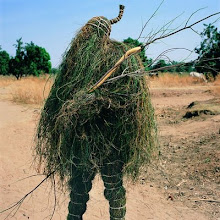Our bees have not had a good season. The cold rainy winter lasted until the end of June and even a little into July. While it stopped raining, we did not see the sun until August. The bees were not flying, the flowers were not blooming, it was cold, windy and miserable. We found foulbrood, usually a winter disease, in one of the hives in June so we had to treat it with antibiotics and lose access to all the honey they produced. The swarm we caught near the school slowly dwindled away to nothing despite the fact they had a laying queen. The smaller secondary swarm from our main colony did not have a good queen or something tragic happened to her and we watched that colony develop a laying worker and become a colony of all drones.
We have a had a month of good weather so we thought for sure we would be harvesting some honey today. We had a look in the first hive, the swarm we caught at the school. The bees clustered on one frame and were just about the size of a tennis ball. No queen. This hive will be dead in a week.
The second hive had a good pattern of brood and I could not see or smell any signs of foulbrood. But there was only enough honey for the hive, not enough for us to take any. I was grateful they were doing well and did not care if we got honey from them or not.
The third hive was the small swarm from out main hive. Cluster of bees about the size of a tennis ball, like the first, no queen. Doomed.
The fourth hive was doing great. Three boxes full of healthy activity, though they were using only 2/3 of the boxes and gathering mainly on the east side, leaving two or three frames empty on the west side, probably because of the way the sun hit the hive. We took the top box off and looked into the second box. That's when I smelled it. Foulbrood. Damn it. We tried to figure out how to deal with it without throwing away more equipment. No way around it. We had to make a new box for them, dump them in, treat them with antibiotics and throw away all their hard work.
After that disappointment I was excited to see if the fifth colony, the big one where the queen got stuck in the honey supers, had recovered. We had seen larvae in the lower boxes before I left town for a few weeks but we were uncertain if it was going to be new worker bees from the recently freed queen or drones from the laying worker. I had noticed a few days ago that very few bees were flying in and out of the hive. As we opened it up it became clear why. The colony was completely gone. The only bees in the boxes were robber bees from other colonies. There were two frames of spotty dead capped worker brood (not drone, so yay!) and some had even tried to chew their way out before they died. But whjere the heck did the queen and all the workers go? It seems like they absconded rather than died out or swarmed, though I suppose there could have been zero nurse bees to keep the eggs and larvae fed and warm. Or they died before the new ones could hatch. Not sure. Not experienced enough to know exactly what happened. All I know is they are gone and we have no honey.
Not the very best news. But at least we have two colonies that are doing OK. Not great, but OK.
This was one of the most disheartening days I've had as a beekeeper. I am afraid that the foulbrood spores have contaminated the entire area in the garden where we have the beehives and are probably also in all of our spare boxes and frames. Probably a thousand dollars' worth of hive boxes and frames possibly useless. Not possibly. Probably.
Peter and I discussed the possibility of buying a new colony and putting it on the roof in all new equipment to see if it did better up there in the full sun. I have always thought it was too shady and cold back there where they are now. I have been wanting to try a hive on the roof but am sad that we have to do it because our other hives are failing.




